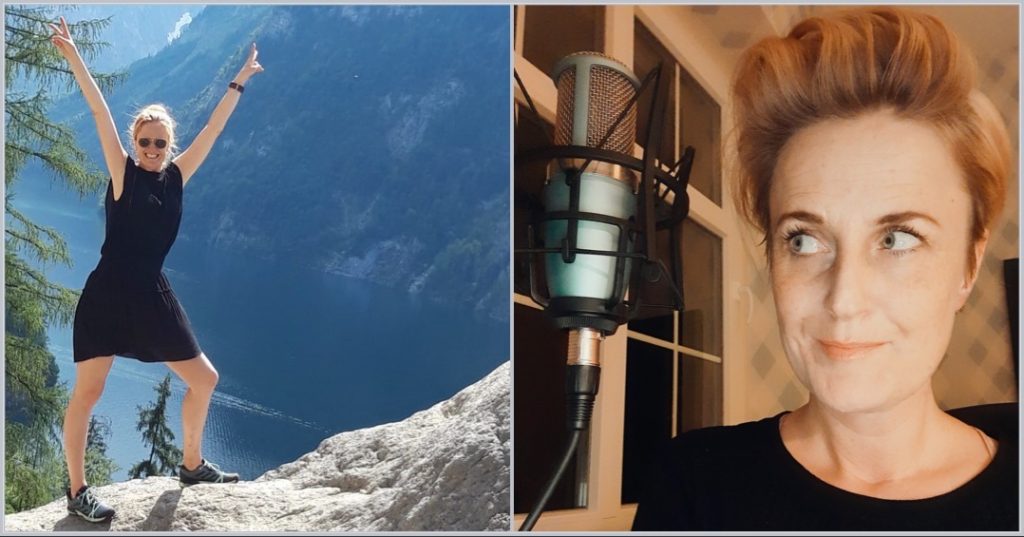Last Updated on 28th February 2021 by Sarah and Justin
I met Sina in 2016 in Berlin. She was the first woman with LAM I met as part of our world trip and I was nervous. But some things are meant to be and Sina was meant to be my introduction to the international LAM community. She is energetic and curious and has a beautiful outlook on life and LAM.
We’ve remained friends ever since that lovely night in Berlin – and have even been able to connect in person several times over the years. Sina has contributed to WWLAM projects in the past, but I’m even more thrilled to share more of her story here including her music.
Sina’s story
Tell us a little about yourself
Hi, my name is Sina Andrä. I’m from Germany, 41 years old, married and mother of a 10 year old boy. We live in Troisdorf, between Bonn and Cologne. We just moved into our house in which we will hopefully live a happy life together with our two Tomcats, good friends, good food and wine and of course good music!
Could you share a little bit about your LAM diagnosis?
I was diagnosed with LAM in the beginning of 2016, so already 5 years ago! I was diagnosed because of a major lung collapse of my left lung that has been pleurodesed twice. Since 2016 I’ve had five lung collapses on my left lung, all on my left lung, three in the beginning when my lung didn’t want to re-inflate and stick to the ribcage as it has supposed to be after a talc pleurodesis and then another pneumothorax and surgery in 2017. In September 2019 I had a lung collapse again but this time it was very small and didn’t need any intervention. No collapses since – yay!
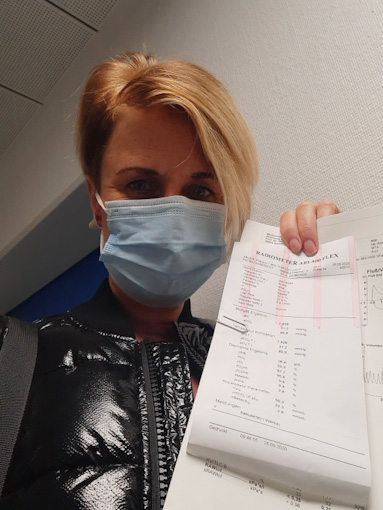
Time is a weird phenomenon – sometimes it feels like it just happened some months ago that I was diagnosed but most of the time it feels like I’ve forever lived with LAM. LAM divided my life into two parts – before and after the diagnosis, but I haven’t changed too much because of LAM. I’m still me.
I have LAM but LAM doesn’t have me.
This is what I learned right in the beginning when I joined the wonderful LAM community – a group of women who support each other, who are willing to see the best in this disease without banning important feelings like grief, vulnerability, anger – it’s ok to be not ok.
How does LAM impact your daily life?
I have some physical symptoms like shortness of breath while walking and talking at the same time. At incline I’m much more out of breath than “normal” people at my age are. Stairs are difficult but it is still ok for me to “huff and puff” upstairs two or three floors. I’m not able to jog anymore, but I can walk for hours on even level.
Another symptom is chest pain, a stabbing or sore pain – it happens all of the sudden and it is scary because I always think it is a lung collapse and every collapse had a negative impact on my lung function.
The other symptoms are less physical but more emotional. I tend to think, research and reflect too much on LAM. That’s not a bad characteristic, but I am learning to let problem-focused thoughts go after being with them for a while. There is no clear solution for every problem and LAM is much too complex to be fully understood. There is no case like another and every outcome is as possible: my lungs could get worse; I could decline rapidly or slowly; things could stay the same or there could be better treatment or even a cure someday. We just don’t know.
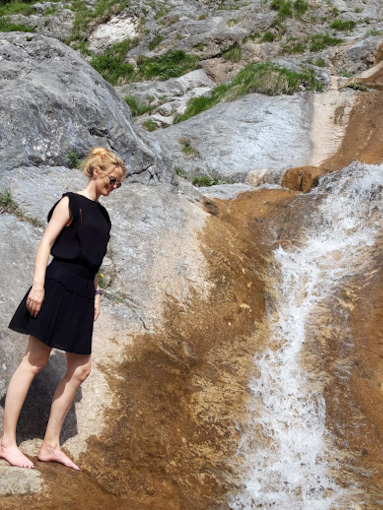
I try only worrying the very moment something happens – no minute before because this minute is too precious to be damaged by fear. This is what I try. It would be a shame to lock these moments in fear and put your life into prison. Fear still is my worst enemy.
I can only do my best to support my body and soul through sports, good nutrition, good people and singing.
Tell us about your singing
Singing has always been a part of my life. I started playing the piano when I was nine years old and tried to compose my own songs and sing along to some easy chords. For many years I secretly played my songs when nobody was at home. These were such intense moments of being totally by myself, fulfilled with my own ideas of music, exploring my voice.
When I was ten years old I started singing in a choir for girls. It was an intense training three times a week with concerts at the weekends. When I was 16 or 17, my best friends and I created a quintet and sang together. Later, when I was 20, I sang in my first electronic music project. It was my first time singing solo, writing lyrics myself, and being involved in arranging and finetuning the songs. We had some gigs and I enjoyed being on stage so much.
I took solo singing lessons with a voice coach for some years until I got pregnant with my son when I was 30. By that time I had stopped singing in projects, but had again joined a choir like I did in my childhood. I loved to sing again together with others and perform soloistic songs at our concerts. These moments where some of my best.
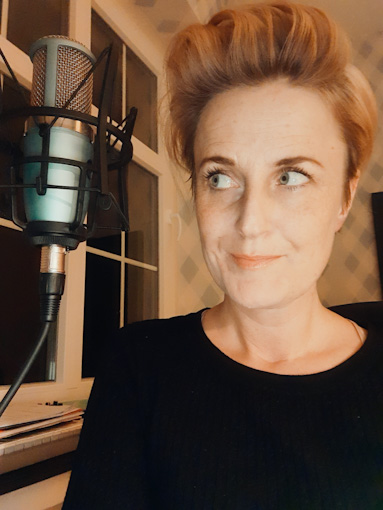
I would find myself in a state that I call a “Dreidimesionaler Glücksmoment” (three-dimensional-joy-moment) – the joy you feel for yourself with the music, the joy you feel while performing the music with others, and the joy you feel when you give the music to the audience and you feel the resonance in them. Singing is a loving dialogue between you and the music, the musicians, the audience. Those breathtaking moments are the ones when you feel life in its core.
Did singing change for you after your LAM diagnosis?
When I was diagnosed with LAM, my surgeries, hospital and recovery time took about six months before I went back to the choir and singing. I definitely felt the difference after the pleurodesis: my left side still is numb in some areas which leads to the odd effect that I can feel my breathing more intensely there.
In the beginning I was afraid to stretch this side while doing my singing warm-ups. But I’m convinced that the breathing techniques I learned for decades before my diagnosis helps my breathing during short-of-breath moments. And, vice versa, I think all the knowledge I gained about our pulmonary system and the sensibility I grew for the tiniest movements of air or breathing muscles due to my lung disease supports my singing ability.
I like to be in control of my breath.
Singing is a brilliant way to get back in this position in which the disease doesn’t have you in its control. But there are more reasons besides those physical aspects why singing is my best LAM-buddy. Mostly, it is a way to be for myself. I get into this creative flow channel so easily where I can play around with my thoughts without being fixed or supposed to find a solution. Singing still is this focused playfulness like it has been in my childhood.
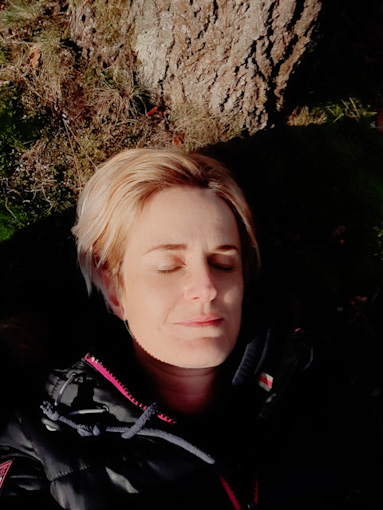
Singing is a form of self-care for me: it calms me and helps me to stay in and gratefully live this moment. Furthermore, it is such an intense personal feeling to sing. The voice is unique, almost unlimited in its variety, and a wondrous mixture of physical and emotional expression combined with the power of words. So singing is always communication, if not with an audience then with yourself.
There is possibly nothing that makes me feel so secure and alive than singing.
Tell us more about the music you’re making now
The music you can listen to at the moment is not easy to describe: although the beat is house-like, sometimes more electro-, sometimes more techno-house, sometimes it is even a little bit more pop than house. My companion is an old friend. He is a house-DJ and creates the instrumental base on which I unfold my ideas for melody and lyrics.
The mixture of our music is defined by this house-like beat – uplifting and easy, and meant to get the people on the dance floor. At the same time, through my voice and lyrics, the songs usually are a little deeper than the sound pretends.
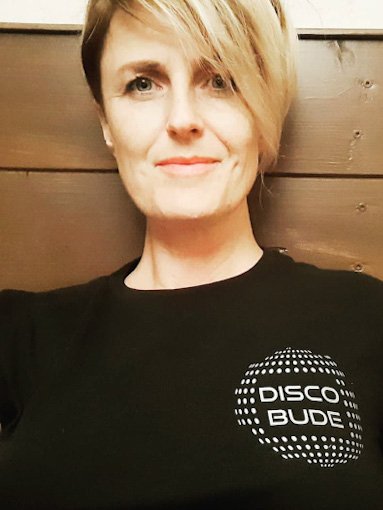
Our first song “New Plateau” is about my struggle with LAM and the will to make the best of it. If not for this whole life then at least for tonight: hang loose, let it go, make a hop, step and jump to a new plateau.
The song “Responding Heartbeat” is about our longing for being seen in our singularity in order to find connection, compassion and response.
Our new song “The Treasure” is my favorite so far. In a specific way it is about my mother who is suffering from dementia. In general it is about the will to hold on to the precious moments we have in life and the responsibility we have to live it to the fullest without letting fear win over integrity. Life is a treasure, let’s hold on to it.
What advice do you have for other women with LAM or who have faced a difficult diagnosis?
Connect and care: with and for your feeling and needs; with and for your resources and strengths; with and for your best people in life; with and for the moment and how it really is.
LAM helped me to focus not on the length or the width of life, but on its depth. You don’t have to live too long, you don’t have to see every country, person, do every hobby or have thousands of “friends”. It’s more important to focus on the most fulfilling moments, the most loving people, the best places – and try to get to know and feel these few things as intensely as possible.
Without LAM I’d not have the same music in me. The sound of my life would be different.
About Sina
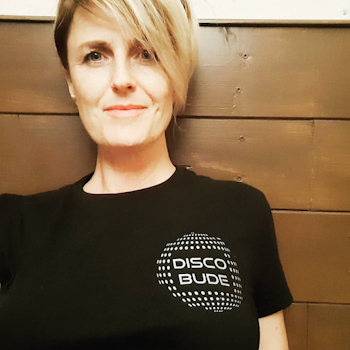
Sina lives in Troisdorf, Germany with her son, husband, and two Tomcats. She is part of the duo, a DJ & a Singer.

